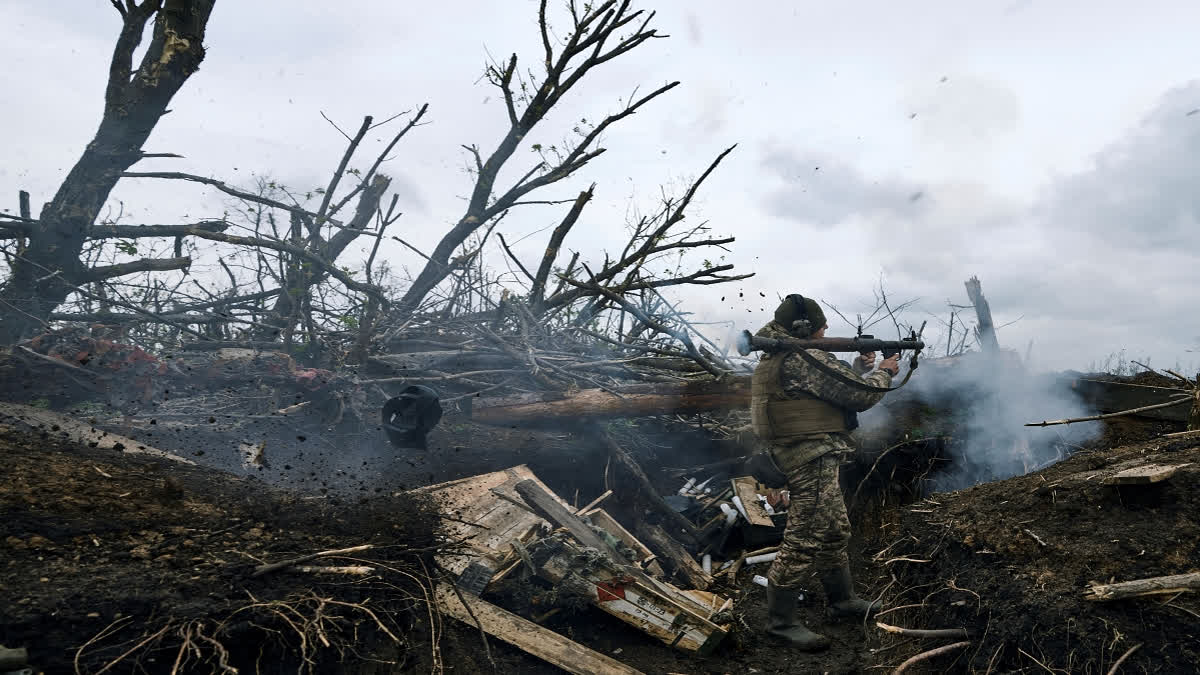Kyiv: The future looks bleak for war-weary Ukraine: It is beset by shortages in soldiers and ammunition, as well as doubts about the supply of Western aid. Ukrainian forces also face a Russian enemy that has recently seized the initiative on the battlefield. Two years after Russia's full-scale invasion captured nearly a quarter of the country, the stakes could not be higher for Kyiv. After a string of victories in the first year of the war, fortunes have turned for the Ukrainian military, which is dug in, outgunned and outnumbered against a more powerful opponent.
As the war enters its third year, here is a look at the situation on the ground, the challenges ahead and some of the potential consequences if Ukraine does not acquire the people, ammunition and assistance it needs to sustain the fight.
WHAT IS THE STATE OF PLAY?
Triumphs have turned to attrition for Ukraine along the snaking front line in the country's east. With Russia gaining advantages, shortages mounting and a major military shake-up still fresh, questions abound about whether Kyiv can keep going. As things stand, neither side has won. Neither side has lost. Neither side is anywhere near giving up. And both sides have pretty much exhausted the manpower and equipment that they started the war with, said Gen. Richard Barrons, a British military officer who is co-chair of a defense consultancy.
Ukraine suffered setbacks after the much-anticipated summer counteroffensive failed to produce any breakthroughs. The armed forces switched to a defensive posture in the fall to repel new advances from Moscow. On Feb. 17, Russian forces took control of the embattled city of Avdiivka, where Kyiv's troops were under constant fire with Russians approaching from three directions. Ukrainian commanders had complained for weeks of personnel and ammunition shortages. It was the biggest battlefield victory for Russia since the fight for Bakhmut, and it confirmed that Moscow's offensive was gaining steam.
Away from the battlefield, Ukraine has proven successful in the Black Sea, where it has used long-range weapons to strike military installations in Crimea and maritime drones to sink Russian warships. Ukraine has disabled a third of the Black Sea Fleet, according to the Atlantic Council. Ukraine is looking to acquire more long-range missiles to strike deep into Russian-occupied territory, a move that some European countries fear may spark escalation from Moscow.
HOW MANY PEOPLE HAVE BEEN KILLED?
Both Russia and Ukraine have sought to keep casualty figures under wraps. Few details about Ukrainian military deaths have emerged since the full-scale invasion began in 2022. But it's clear that tens of thousands of Ukrainian civilians have been killed. In 2023, the first independent statistical analysis of Russia's war dead concluded that nearly 50,000 Russian men had died in the war. Two independent Russian media outlets, Mediazona and Meduza, worked with a data scientist from Germany's Tbingen University to analyze Russian government data.
WHAT HAPPENS IF UKRAINE CAN'T FIND MORE TROOPS?
Without more soldiers, Ukraine's defensive lines will be overstretched and more vulnerable to Russian attack, especially if Moscow launches intense multi-pronged assaults along the 1,000-kilometer (620-mile) front line. The Ukrainian military has an average personnel shortage of 25% across brigades, according to lawmakers. Military commanders are unable to give their soldiers enough rest, and Russia has recently increased the tempo of attacks. As a result, soldiers are tired and more easily injured exacerbating the effects of the shortage.
Ukraine's military command has said 450,000 to 500,000 additional recruits are needed for the next phase of the war. Even if Ukraine succeeds in mobilizing that number, which is unlikely, it still would not be able to match the manpower of Russia, which has more than three times Ukraine's population.
Lawmakers have spent months mulling over a controversial proposal to increase the conscription pool, as many Ukrainian men continue to evade the war in Ukrainian cities.
